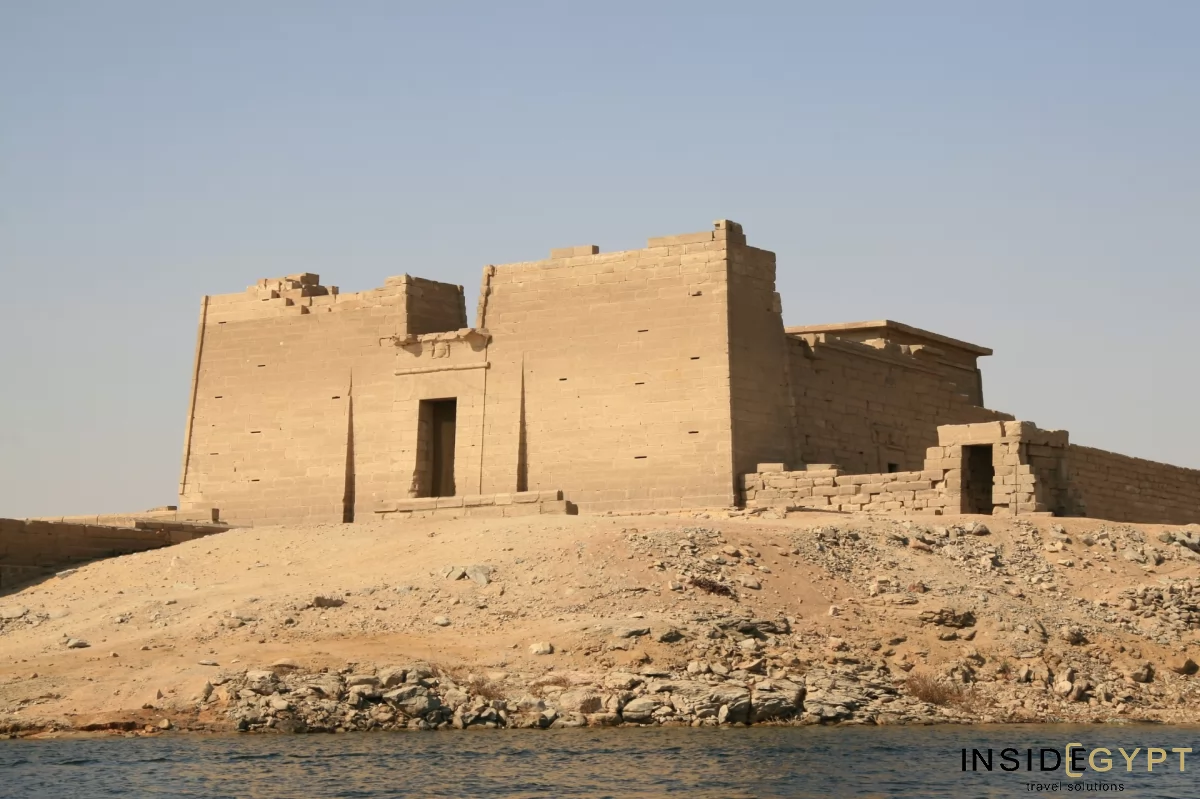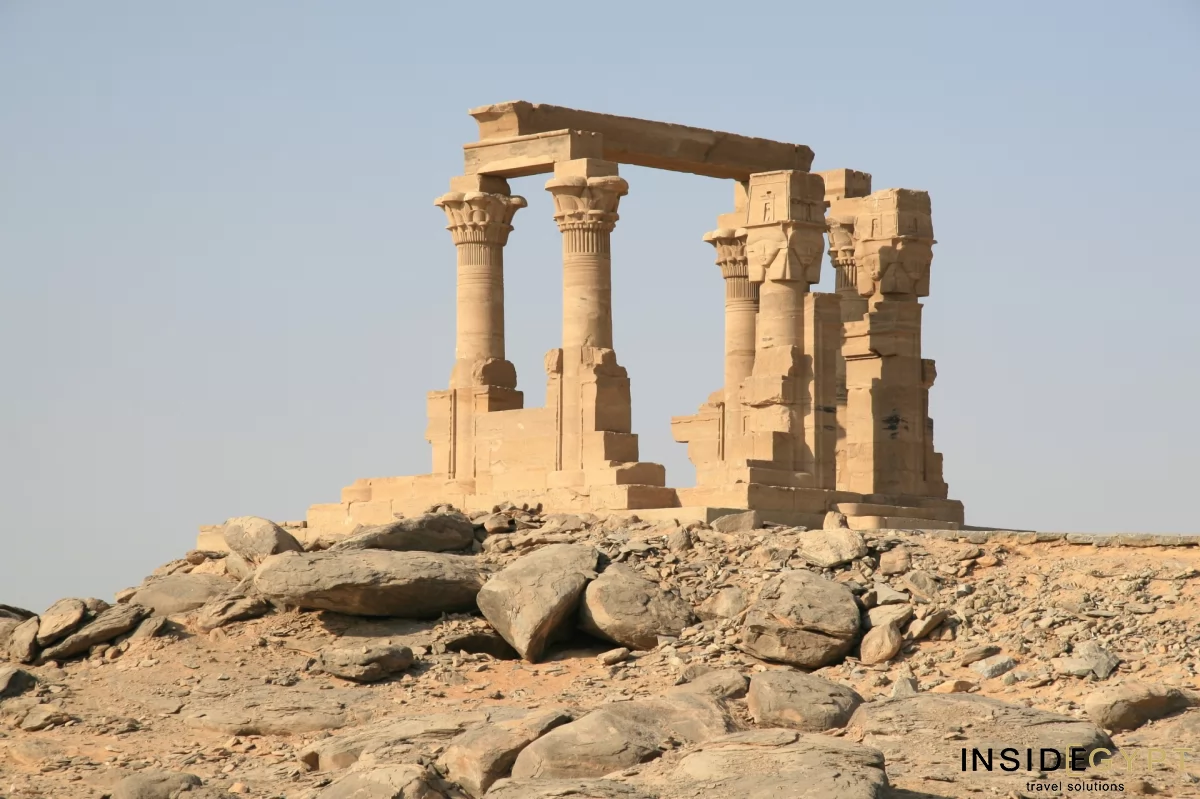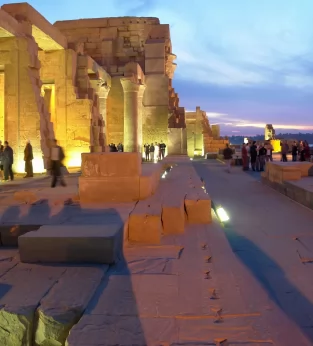Stay updated!
The Kalabsha temple is the first Nubian temple to be moved. Initially, it was located more than 40 kilometers south, on the site of the former Talmis, and its demolition was financed by the Federal Republic of Germany. In this temple, which was one of the most important temples of Nubia (71.6 m long and 22 m wide), Mandulis, the lion-god, was worshiped both as a child and adult. It symbolized renewal and fertility, and it was similar to the sun and the full moon. Like Isis, he was especially adored by the Blemmyes (People who appeared in written sources from the 7th century BC until the 8th century AD. By the late 4th century, they had occupied Lower Nubia and established a kingdom).
Stairs lead to the temple from the waterfront. It was built by Emperor Augustus on the site of a sanctuary built by Amenhotep II (18th Dynasty). The pylon slightly shifted in relation to the construction axis, is 14 m high and is divided into rooms located on different floors. The stairs lead to the topf, which offers a beautiful view of the lake and the desert.
The courtyard with porticoes (on three sides), with composite columns, is the entrance from the north and south to four small rooms. The hypostyle hall initially had 12 columns with capitals richly decorated with floral motifs. The column to the right of the entrance is engraved with a Meroitic inscription that is difficult to read.
The walls of the hall depict scenes of sacrifices and worshiping gods such as Min, Chnu and Mandulis. The temple was converted into a church in the 4th century. It is surrounded by a stone wall, delimiting the bypass in which the Nilometer is located. Originally, the temple was protected by a second brick wall.
See it in person! Book your luxury Egypt tour!













